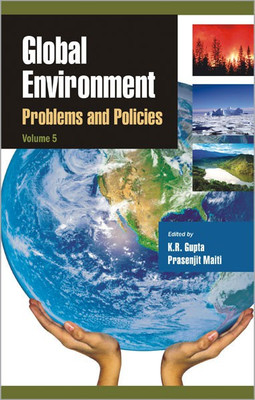Global Environment Problems and Policies(English, Hardcover, unknown)
Quick Overview
Product Price Comparison
Some major developments witnessed during the 20th century have greatly impacted human beings as well as the planet EarthŌĆöthe only known planet to support life. Incalculable harm is being caused to natural habitats, eco-systems and environment by unprecedented growth in population resulting in great rise in consumption; rapid increase in urbanization and industrialisation; dramatic changes in global economic environment; and reckless use of mineral and forest resources, etc. It is ironical that some of the achievements of the 20th century themselves pose the challenges for the present 21st century. As of 2008, the world population has reached 6.66 billion. According to data from the CIAŌĆÖs World Fact Book (2007), world human population increases by 211,090 people every day. With 6.66 billion people inhabiting this earth, and the global economy over the next 25 years could expand from $35 trillion in 2005 to $72 trillion in 2030 (World Bank). Such high pace of human and economic activity is putting pressure on global life support systems. Many symptoms of environmental crises illustrate what can go wrong if resources are used in ways that cause environmental damage. If has long been recognized that the future of this planet and its people is intimately tied up with our ability to maintain and preserve life support systems provided by nature. This makes it our duty to ensure that all uses of renewable resources are sustainable; the diversity of life on Earth is preserved; and damage to natural environmental systems is minimized. The book contains articles by erudite scholars and environmentalists who have deeply analysed various issues related to environmental degradation and made valuable suggestions to deal with pertinent problems. They have laid emphasis on sustainable development which has become the catchword in the domain of intellectual activism and accentuates the notion that economic growth should proceed only in so far as natural resources are recycled rather than depleted, renewable sources of energy like solar and wind energy are developed, effective strategies for preserving forests are made, biodiversity is maintained, and clean air, potable water and fertile lands are protected. The book will be highly beneficial for students, researchers in the field of environment, policymakers, executives and industrialists. It will create awareness among the readers about the need to adopt sustainable practices, protect natural habitats and preserve biodiversity.


